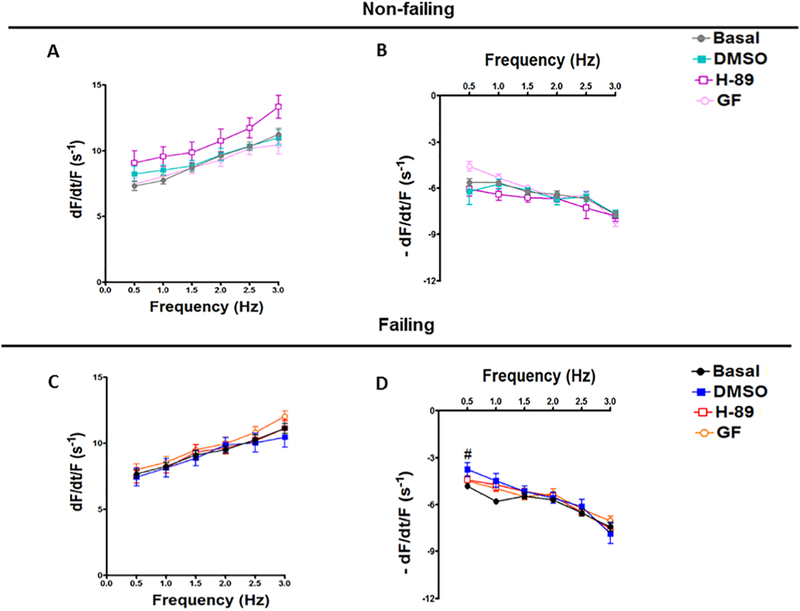Figure 3:

Effect of H-89 and GF109203X on dF/dtmax/F and dF/dtmin/F of Non-failing and Failing Human Hearts. Representative line graphs show the maximum rate of force increase normalized to developed force (dF/dtmax/F) data from non-failing trabeculae muscles treated with DMSO, H-89 and GF109203X (A); and the minimum rate of force decrease normalized to developed force (dF/dtmin/F) (B). The maximum rate of force increase normalized to developed force (dF/dtmax/F) data from failing trabeculae muscles treated with DMSO, H-89 and GF109203X (C); and the minimum rate of force decrease normalized to developed force (dF/dtmin/F) (D). All data presented as mean ± SEM. DMSO: dimethyl sulfoxide. Non-failing: (n= 7); failing: (n=9). H89: Non-failing: (n= 6); failing: (n=9). GF: GF109203X. Non-failing: (n= 8); failing: (n=9). #: Indicates a significant change in DMSO comparing to basal failing group at 0.5 Hz.
